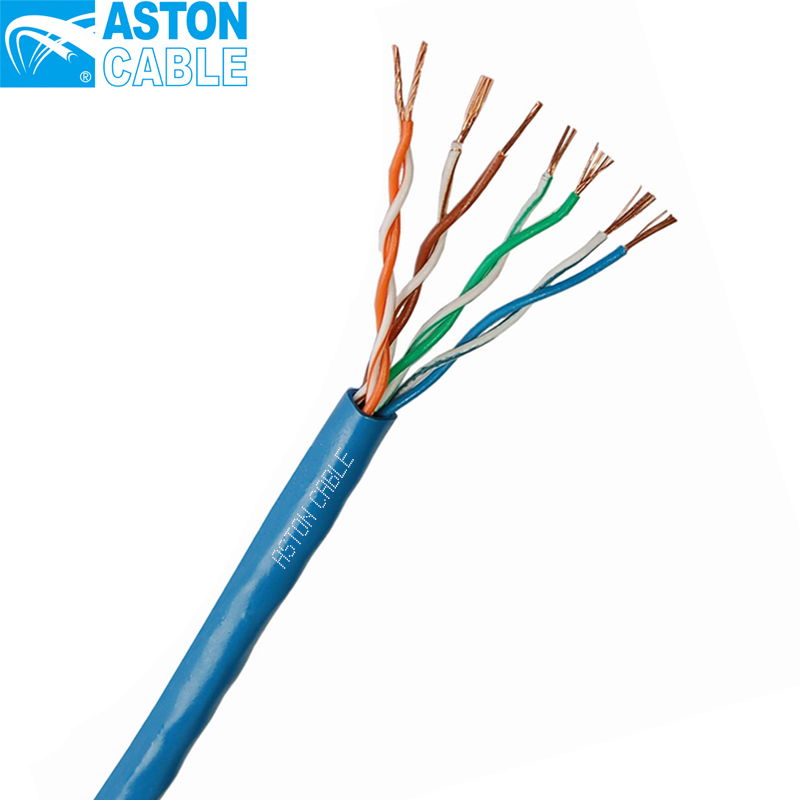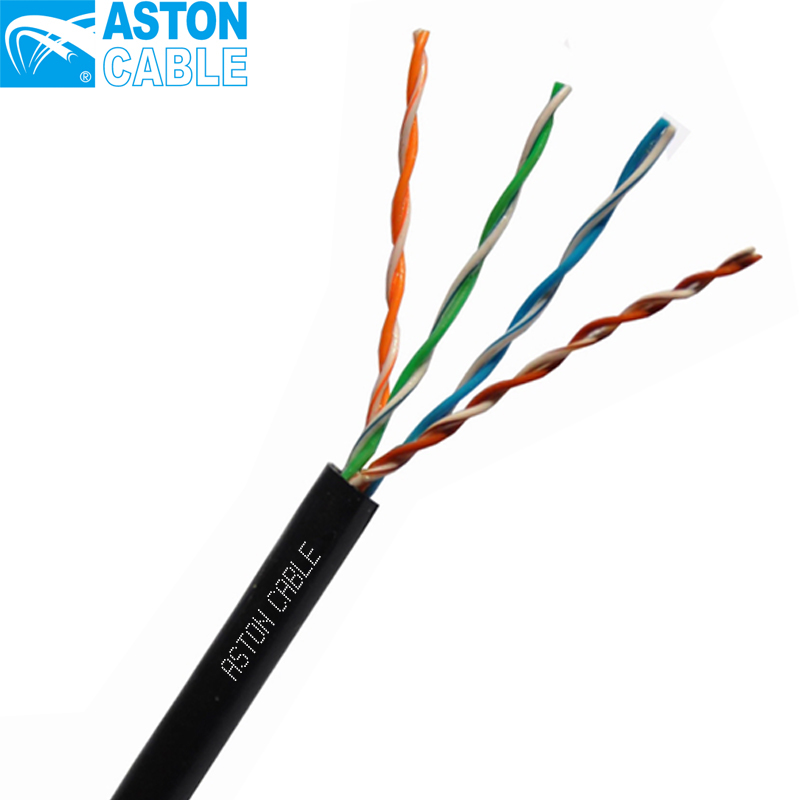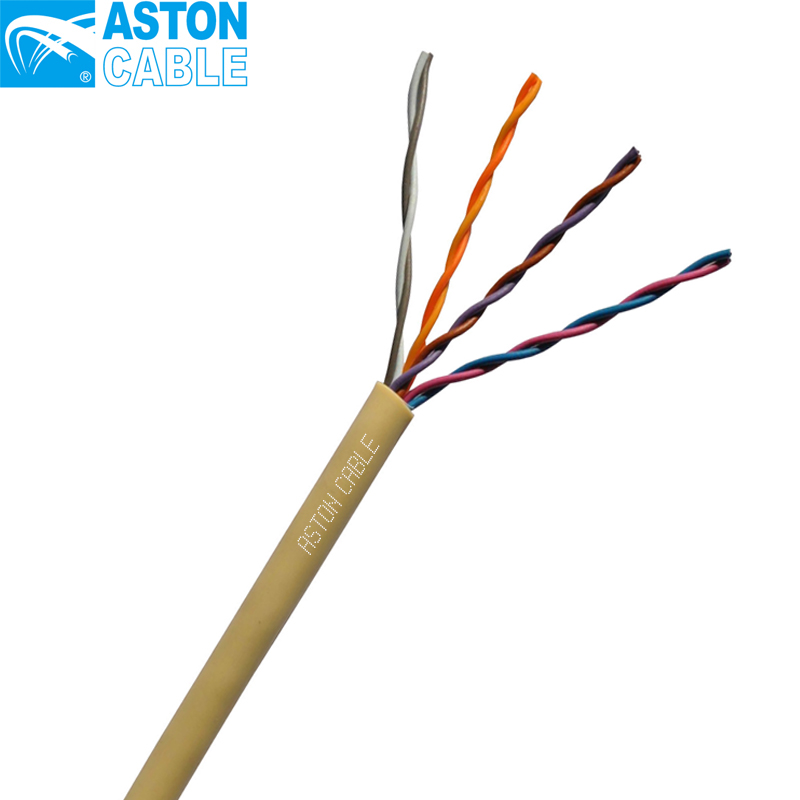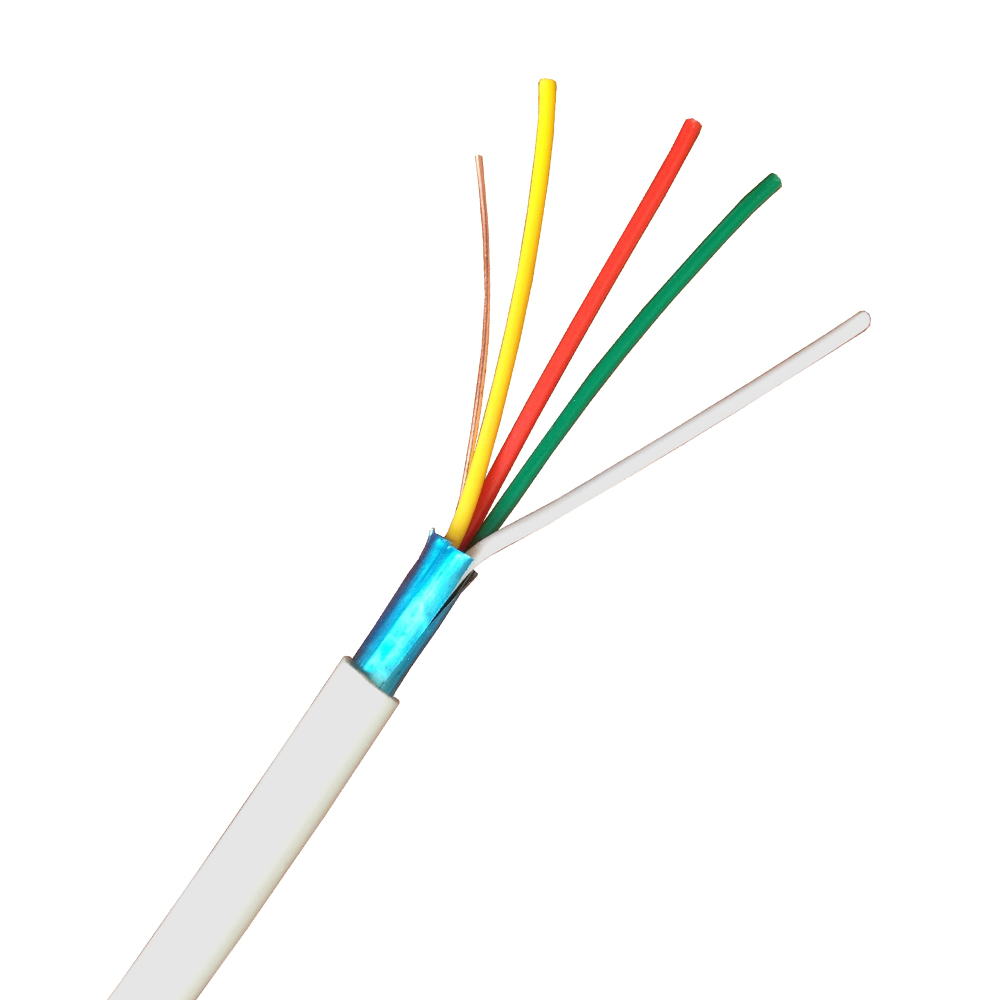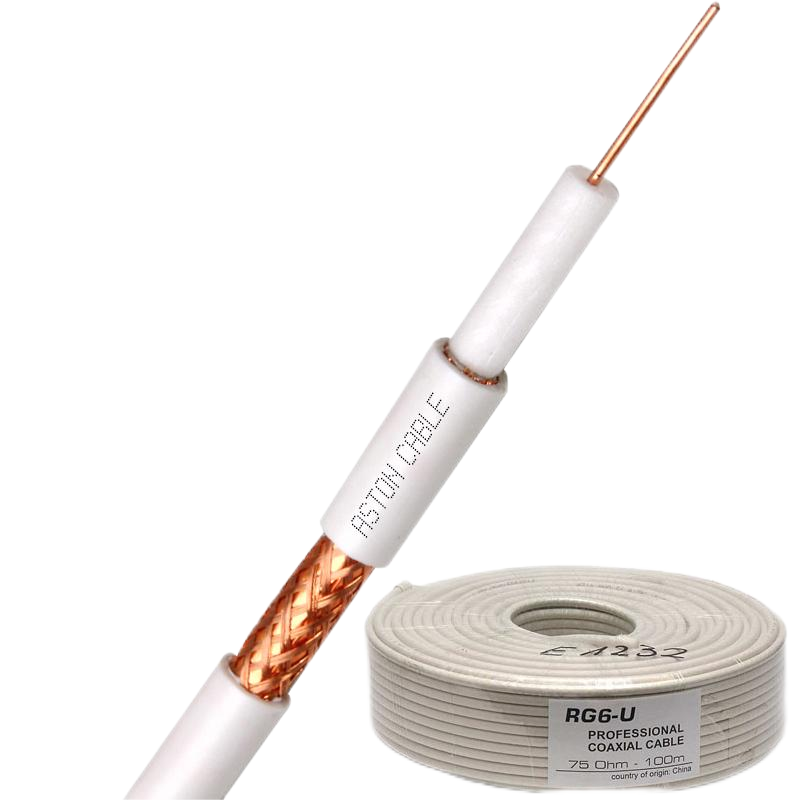Product Main Parameters
| Parameter | Details |
|---|---|
| Bandwidth | 100 MHz |
| Data Rate | Up to 1 Gbps |
| Conductor Material | CCA (Copper-Clad Aluminum) |
| Conductor Size | 24AWG |
| Insulation Material | HDPE |
| Jacket Material | PVC, LSZH, PE |
| Shielding | None |
| Compliance | TIA/EIA-568-B.2-2001, RoHS, CE, IEC |
Common Product Specifications
| Specification | Details |
|---|---|
| Minimum Order Quantity | 50km |
| Daily Output | 200KM of Coaxial Cable |
| Annual Supply Ability | 25000KM |
| Origin | Hangzhou, Zhejiang, China |
| Delivery Port | Ningbo |
Product Manufacturing Process
Cat5e cables are produced through a rigorous manufacturing process that includes several critical steps to ensure high performance and compliance with standards. The process begins with the careful selection of raw materials, including high-quality CCA (Copper-Clad Aluminum) conductors. These conductors are then twisted into pairs to minimize crosstalk and electromagnetic interference. The twisted pairs are insulated with HDPE (High-Density Polyethylene) and subsequently jacketed with materials such as PVC, LSZH (Low Smoke Zero Halogen), or PE, depending on the specific requirements. During production, the cables undergo stringent testing for compliance with TIA/EIA-568-B.2-2001 standards, including tests for bandwidth, data rate, and crosstalk. The manufacturing process is optimized for efficiency, ensuring a daily output of up to 500km of finished products. Quality control systems are in place to monitor every stage of production, ensuring that each cable meets the high standards expected by our customers.
Product Application Scenarios
Category 5e (Cat5e) cables find extensive application in various networking and communication scenarios due to their robust performance and cost-effectiveness. In home networking, Cat5e cables are often used to connect computers, routers, and other network devices, supporting high-speed internet and data transfer rates of up to 1 Gbps. In business environments, these cables are commonly employed in structured cabling systems for Ethernet, telephone systems, and even some audio and video applications. The versatility of Cat5e makes it suitable for smart home installations, enabling the connection of sensors, cameras, and other smart devices. Additionally, Cat5e cables are used in industrial settings for automation systems and in AV setups for long cable runs. Proper installation, including maintaining the twist of pairs and avoiding sharp bends, ensures optimal performance in all these application scenarios.
Product After-Sales Service
We offer comprehensive after-sales service for our wholesale Cat5e cables. This includes technical support to assist with any installation or performance issues you may encounter. Our customer service team is always available to answer questions and provide guidance on optimal usage. Additionally, we offer a warranty on our products, ensuring that any defects or issues are promptly addressed. We strive to maintain high customer satisfaction through timely responses and effective solutions.
Product Transportation
Our products are packaged in normal export packaging to ensure they arrive in perfect condition. We primarily use Ningbo port for shipping, but alternative ports can be arranged if necessary. We offer competitive shipping rates and work with trusted logistics partners to ensure timely and secure delivery. Our team monitors shipments closely to avoid any delays and is available to provide updates throughout the transit process.
Product Advantages
- Cost-effective: CCA conductors offer a more economical solution compared to pure copper.
- High Performance: Supports data rates up to 1 Gbps and frequencies up to 100 MHz.
- Versatile: Suitable for a wide range of networking applications, including Ethernet, telephone systems, and smart home installations.
- Compliance: Meets TIA/EIA-568-B.2-2001 standards and is RoHS, CE, and IEC compliant.
- Flexible: Softer and more suitable for wiring due to the absence of a central cross separator.
Product FAQ
-
What is Cat5e cable used for?
Cat5e cable is used primarily for networking applications, including connecting computers, routers, and other devices to form a local area network (LAN). It supports high-speed data transfer up to 1 Gbps, making it suitable for both residential and commercial installations.
-
What does CCA mean?
CCA stands for Copper-Clad Aluminum. It is a type of conductor material that combines aluminum core with a copper coating. While it is more affordable than pure copper, it still provides good conductivity and is suitable for most networking applications where cost is a key consideration.
-
Can Cat5e cable support Gigabit Ethernet?
Yes, Cat5e cable can support Gigabit Ethernet (1000BASE-T) with data transfer rates up to 1 Gbps for distances up to 100 meters (328 feet). It is a cost-effective solution for achieving high-speed network connections.
-
How should I install Cat5e cable?
When installing Cat5e cable, it is important to maintain the twists in the pairs as close as possible to the termination point to minimize signal degradation. Avoid bending the cable too sharply, and consider using shielded versions of the cable in environments with high electromagnetic interference.
-
What is the difference between Cat5e and Cat6?
While both Cat5e and Cat6 cables support Gigabit Ethernet, Cat6 offers higher bandwidth (up to 250 MHz) and supports data rates up to 10 Gbps over shorter distances (55 meters for 10 Gbps). Cat6 also has stricter specifications for crosstalk and system noise.
-
Is Cat5e cable future-proof?
While Cat5e is sufficient for most current applications, future network demands might favor higher-category cables such as Cat6 or Cat6a, especially for new installations. These higher-category cables offer better performance and higher data rates, making them more suitable for future network upgrades.
-
What types of jackets are available for Cat5e cable?
Cat5e cables are available with various jacket materials, including PVC, LSZH (Low Smoke Zero Halogen), and PE. PVC is common for general use, while LSZH is preferred in environments where reduced smoke and toxicity are crucial, such as in public buildings.
-
Can Cat5e cable be used for telephone systems?
Yes, Cat5e cable can be used for traditional telephone wiring, although IP-based phone systems are becoming more prevalent. Its high performance and versatility make it suitable for a range of communication applications.
-
What is the maximum distance for Cat5e cable?
Cat5e cable can support data transfer rates up to 1 Gbps for distances up to 100 meters (328 feet). For applications requiring longer distances, network repeaters or switches can be used to extend the range.
-
How does Cat5e reduce crosstalk?
Cat5e cable is designed with improved specifications for Near-End Crosstalk (NEXT) and Power Sum NEXT (PSNEXT) compared to the older Cat5 standard. The twisted pair design minimizes electromagnetic interference, reducing crosstalk and enhancing overall performance.
Product Hot Topics
-
Choosing Between Cat5e and Cat6 for Your Network
When deciding between Cat5e and Cat6 cables, consider your current and future networking needs. Cat5e is cost-effective and supports Gigabit Ethernet, making it suitable for most residential and small business applications. However, if you anticipate higher data rates and increased network demands in the near future, investing in Cat6 might be a better choice. It offers higher bandwidth and better performance, albeit at a higher cost. Evaluate your budget and network requirements to make an informed decision.
-
Understanding CCA Conductors in Cat5e Cables
Copper-Clad Aluminum (CCA) conductors are often used in Cat5e cables to reduce costs while maintaining reasonable performance. Although CCA conductors are lighter and more affordable than pure copper, they also have higher resistance and are less efficient at transmitting electricity. For most home and office networking scenarios, CCA cables offer a good balance of cost and performance. However, for installations requiring stringent performance criteria, pure copper conductors are recommended despite the higher cost.
-
Installation Tips for Cat5e Cables
Proper installation is key to ensuring the performance and longevity of Cat5e cables. First, maintain the twists in the pairs as close to the termination points to minimize signal degradation. Avoid sharp bends and ensure a proper bend radius to prevent damage to the cable. If you're installing cables in an environment with high electromagnetic interference, consider using shielded Cat5e cables. Lastly, always use quality connectors and follow best practices for crimping and testing to ensure a reliable network setup.
-
Applications of Cat5e Cables in Home Automation
Cat5e cables are increasingly used in home automation systems to connect various smart devices. These cables can transmit data effectively between sensors, cameras, and control hubs, enabling seamless communication across the system. Their high-speed data transfer capabilities make them suitable for real-time applications such as security cameras and automated lighting systems. Additionally, their cost-effectiveness allows for extensive installations without breaking the bank, making them an excellent choice for modern smart homes.
-
Cat5e vs. Wireless: Which is Better for Your Network?
Both Cat5e cables and wireless networks have their advantages and disadvantages. Cat5e cables offer stable, high-speed connections with minimal interference, making them ideal for fixed installations like desktop computers and routers. Wireless networks, on the other hand, provide greater flexibility and mobility, allowing devices to connect without being tethered by cables. However, wireless networks can suffer from signal interference and lower speeds compared to wired connections. Depending on your specific needs, you may find a combination of both wired and wireless solutions to be the most effective for your network.
-
The Role of Cat5e Cables in Business Networks
Cat5e cables play a crucial role in business networks by providing reliable and high-speed connections. They are commonly used in structured cabling systems to connect various network devices, such as computers, printers, and servers. The ability to support Gigabit Ethernet ensures that data transfer rates are sufficient for most business applications, from file sharing to video conferencing. Furthermore, their cost-effectiveness makes them a practical choice for large-scale installations, helping businesses maintain efficient and secure network operations.
-
Cost-Effective Networking with Cat5e Cables
For those looking to build or upgrade a network on a budget, Cat5e cables offer a cost-effective solution without compromising performance. These cables are less expensive than higher-category cables like Cat6 and Cat6a, yet they still support Gigabit Ethernet and have robust performance characteristics. This makes them ideal for small businesses, residential installations, and any scenario where cost is a key consideration. By choosing Cat5e, you can achieve reliable network performance without breaking the bank.
-
The Importance of Compliance in Cat5e Cable Manufacturing
Compliance with industry standards is crucial in the manufacturing of Cat5e cables to ensure safety and performance. Our Cat5e cables meet TIA/EIA-568-B.2-2001 standards and are RoHS, CE, and IEC compliant. This guarantees that the cables are safe to use and meet the necessary performance criteria for various applications. Compliance also ensures that the cables are free from hazardous substances, making them safer for both users and the environment. When choosing Cat5e cables, always look for products that meet these standards to ensure quality and reliability.
-
How to Test Cat5e Cable Performance
Testing is an essential part of ensuring the performance and reliability of Cat5e cables. The most common test is the Fluke Test, which evaluates various parameters such as bandwidth, data rate, and crosstalk. This test helps identify any issues that may affect performance, such as improper installation or manufacturing defects. Using quality testing equipment and following best practices can help ensure that your Cat5e cables perform as expected. Additionally, periodic testing can help identify any issues that may arise over time, allowing for timely maintenance and repairs.
-
Advantages of Choosing Wholesale Cat5e Cables
Buying Cat5e cables in bulk offers several advantages, especially for large-scale installations. Wholesale purchasing significantly reduces the cost per unit, making it a cost-effective solution for businesses and contractors. Moreover, buying in bulk ensures a steady supply of cables, which is particularly beneficial for ongoing projects. Additionally, wholesale suppliers often offer better customer support and warranty options, providing added peace of mind. Whether you're setting up a new network or expanding an existing one, choosing wholesale Cat5e cables can offer significant cost savings and convenience.
Image Description
